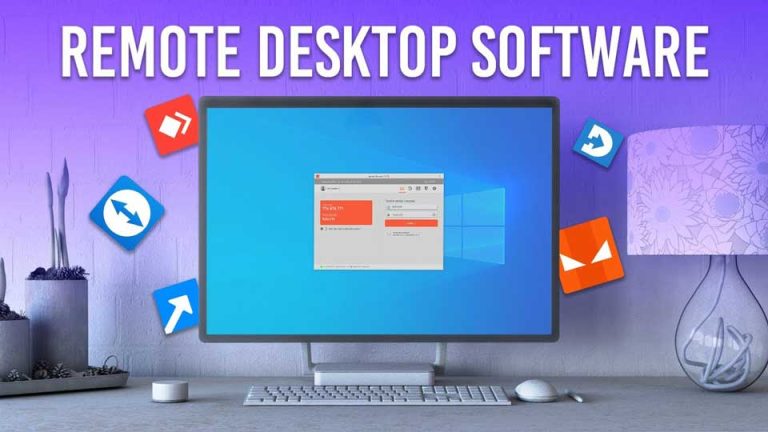Best Remote Desktop Software in 2024, Screen sharing windows, more accurately known as Remote desktop software, are tools that allow you to access one pc from another pc remotely.By remote, we mean that users can take the access of a mouse and keyboard of a distant PC just like their own. Remote access is highly beneficial for people sitting at long distances, the IT department of large corporates and many more.
However, to do this, you need specialized software which will connect your PC to the host system. Once you have the required software in place, you can easily connect your client pc with the host pc with proper credentials.
Are you scared about the technical aspect of sharing the screen with another computer? Just download a free screen sharing software to get your job done.
List of the 9 Best Remote Desktop Software for 2024
While many Windows computers come with in-built software, however, there are several best screen sharing software that can do the job in a much better way and also provide additional features.
1. Zoho Assist
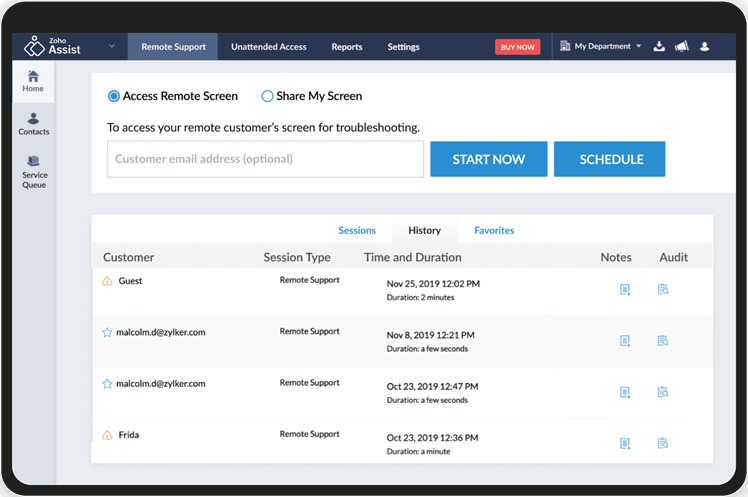
Zoho Assist is a blessing to IT departments and works on a cloud-based software platform. It is one of the best ways to connect to end customers within seconds.
It works on an On-demand mechanism and sends email invitations to its user to connect with the host PC. It supports file transfer, video, and voice chat along with solving rebooting issues on the client-side.
Additional features:
• It comes with an easy to use auto-detect tool.
• It also supports the recording of sessions for monitoring purpose.
• It can also club client system based on their location and functions.
It is one of the best troubleshooting tools for IT companies which can solve all kinds of system-related issues. This stunning application comes in both a free and paid version. With the free version, you can connect with up to 5 machines.
With all the features, this tool is undoubtedly worth a try.
Remote Your Desktop Now
Read Also : Best Free Phone Number Apps 2024
.
2. TeamViewer 14
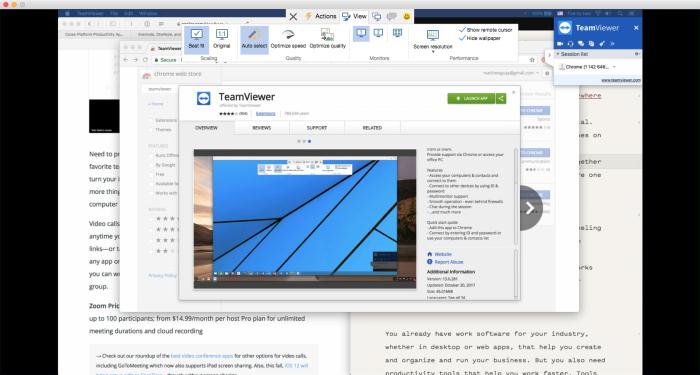
This all-round software undeniably deserves a place in the list of best screen sharing software. This comprehensive tool can support multiple devices with a massive number of platforms.
It’s easy to use UI makes it the right choice. It also comes in a free version for home users. You can connect up to 4k desktops, share files, and also supports alternative VPN’s.
Remote Your Desktop Now
.
3. Chrome Remote Desktop
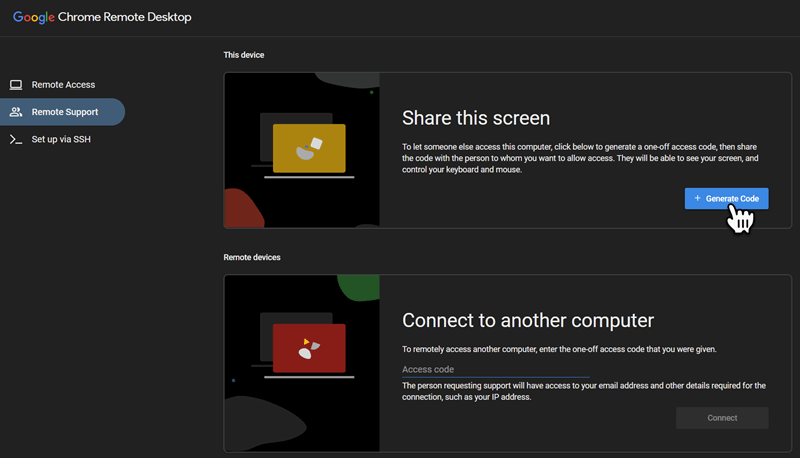
Chrome Remote Desktop is one of the easiest and the most straightforward screen sharing application. It works as a chrome extension and is quite easy to install.
You can add multiple users to the host computer using a security pin. The only drawback of this application is that when compared to other players is has a limited number of features to offer.
Remote Your Desktop Now
.
4. Remote Desktop Manager
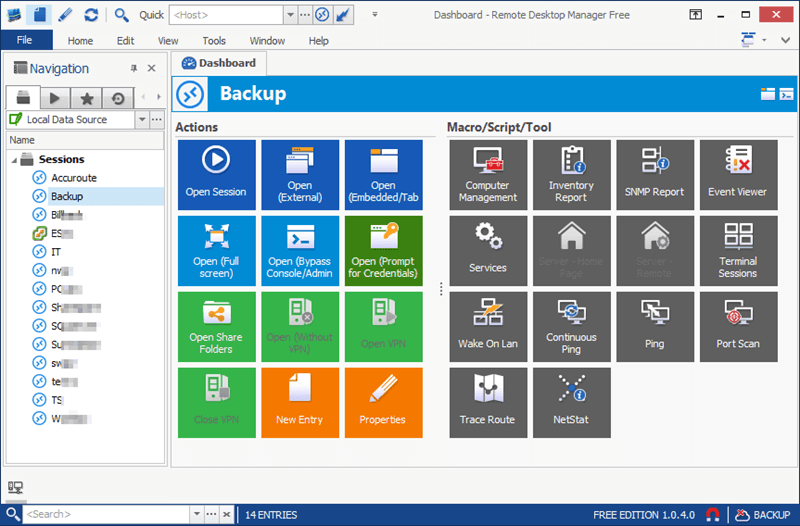
It is a must-have application for SME businesses who are looking for an efficient system to control their computer systems remotely.
It comes with a good range of features and is quite easy to use. Individual users can opt for its limited free edition while large corporates can buy a site license to support all PC.
Remote Your Desktop Now
.
5. Remote Utilities for Windows
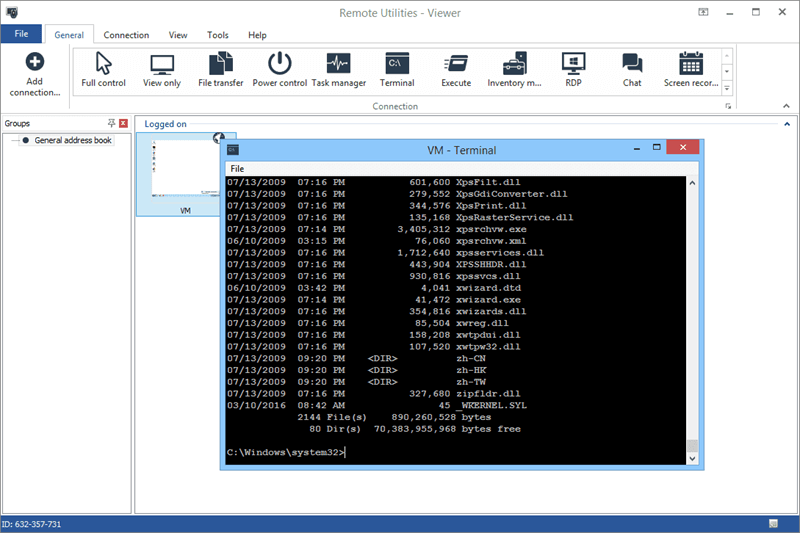
Another most trusted and reliable option in the category of best screen sharing software is “Remote Utilities for Windows.” It comes with incredible features that can give enough competition to even the paid software.
Users can connect up to 10 PC with this feature-rich tool. It works on 2 platforms, the first one if the Host software that is installed on the Host PC and the Viewer software that need to be installed on the clients pc.
The only downside of this incredible piece of technology is that it can only work on Windows PC.
Remote Your Desktop Now
.
6. LogMeIn Pro
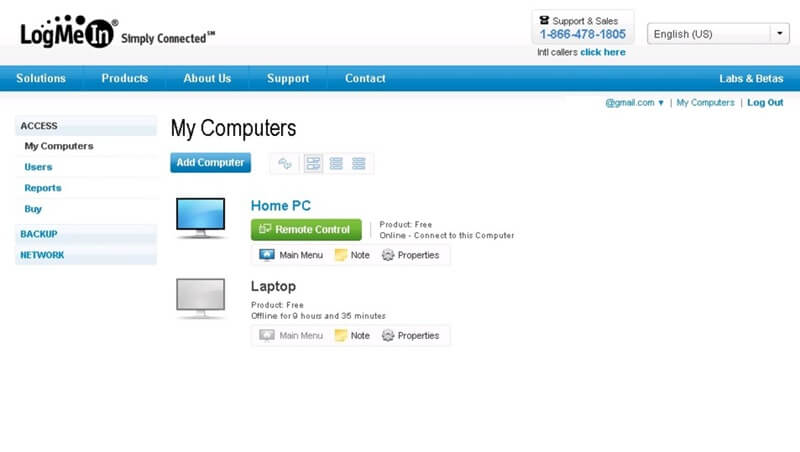
LogMeIn is the ultimate choice for large companies which require a powerful and robust screen-sharing technology.
It is specially developed to support large enterprises and comes with a suite of sophisticated and useful tools that can easily manage multiple systems and users.
The only downside is that it does not suit everybody’s pocket. However, as an additional benefit, you get 1TB of cloud storage with its premium subscription.
Remote Your Desktop Now
.
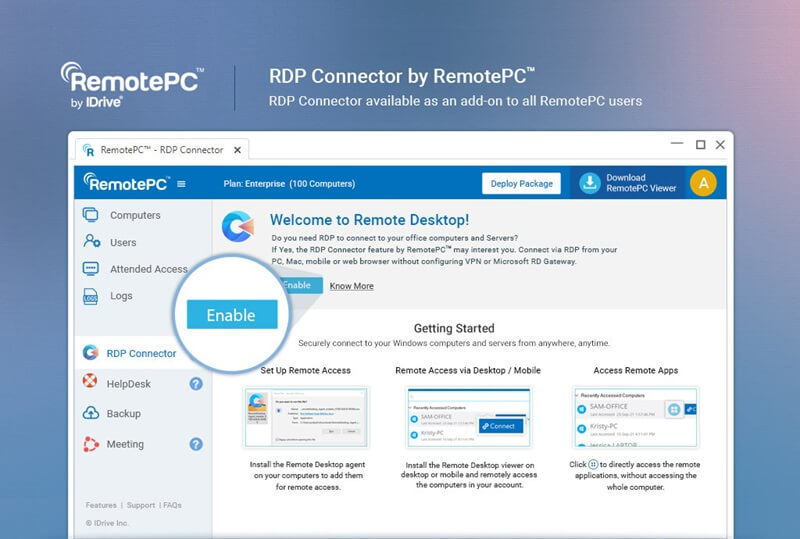
Personal or business use, Remote PC is suitable for both. It works on Cloud, which makes it a good option for individual users as well as large enterprises.
Several computers can be configured with the host PC, and additional users can also be added with an access key and password.
All the remove connection are highly secure with AES-256 encryption, and use of access credentials adds on to the security level.
A round the clock support team is also available to help users and customers. Individual users can get this stunning tool in $ 51.12 as first-year subscription.
Remote Your Desktop Now
.
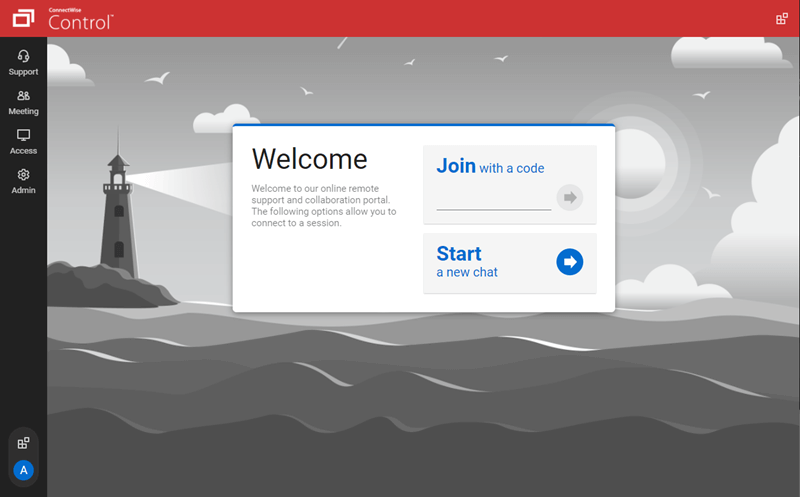
This powerful application is effortless to use and comes with an array of features. It works on 2 key options: Access and support.
Support is a Cloud-based service which supports real-time accessing of users machine. It also uses a 2FA mechanism and AES-256 encryption to ensure high-end security.
Users can schedule meetings, give remote prints, and transfer files. Its standard plan costs $35 annually and allows a single user to connect with 3 different system.
Remote Your Desktop Now
.
9. VCN Connect
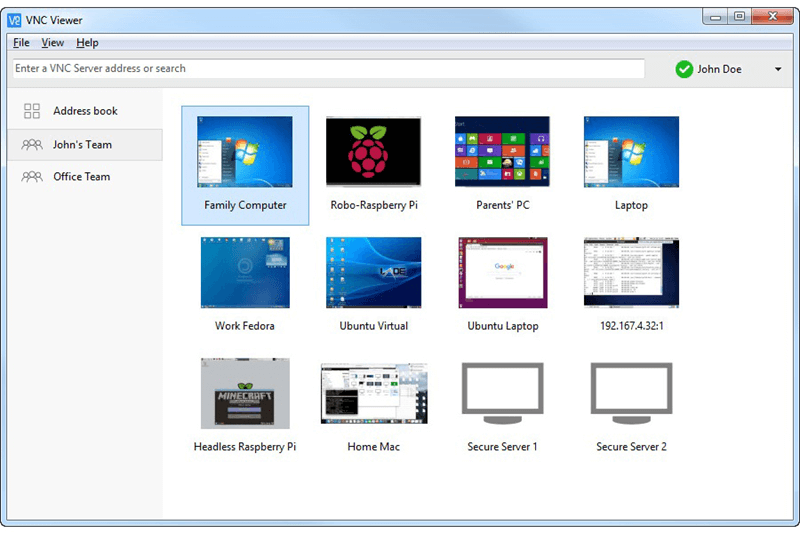
Another well-known name in the list of best screen sharing software is VCN Connect. It is most suited for multinational companies.
Users can easily connect, monitor, support, and collaborate with the user’s devices. Real-time remote access is quite easy with this powerful desktop tool
Remote Your Desktop Now
.
What is remote desktop software?
Remote desktop software, also known as remote access software, allows users to access another computer or system remotely in real time and work on it like their local device. It ensures easy, efficient, and secure access to one or many remote desktops.
While the software can also be used for remote support, a remote desktop tool is typically used by employees to access a machine remotely rather than to resolve a technical problem. Though the maintenance functions may not be as extensive as those of remote support solutions, remote desktop tools aid support teams in performing basic maintenance tasks on numerous devices from a single station.
Typical use cases of a remote desktop tool include granting employees access to and managing distant computers anytime, from any device, which gives them the privilege to work from anywhere. Sometimes IT support professionals use remote desktop software to troubleshoot and perform maintenance tasks remotely.
What are the common features of remote desktop software?
The following are some core features of a remote desktop tool that can help users achieve greater flexibility and cost savings through remote work:
• Remote access and control: Remote desktop software provides end users access to and control over other devices not in their physical vicinity. The software facilitates the visibility of a specific window or the entire desktop.
• Multi-monitor support: Many workplaces now opt for multiple monitors at their workstations to help improve productivity. As a result, the remote desktop tool supports the capability to view multiple monitors at a time.
• Multiple operating system (OS) support: Businesses today use Windows, macOS, Linux, or other OS, and sometimes multiple OS within the same company. Remote desktop software has features to handle viewing and functioning on any OS, independent of the OS the end user is connecting from.
• Mobile device access: Remote desktop tools allow administrators to access connected mobile devices and support mobile OS like Android, iOS, and more.
• Data encryption: When a user’s device is being used and managed remotely, it may leave the user feeling vulnerable. The remote desktop tool offers a data encryption feature to secure the connection and protect data.
• File management: Remote desktop software facilitates file sharing and transfers to enable quick and effortless work discussion, collaboration among colleagues, and viewing of relevant documents when working remotely. The shared or transferred files are highly secure as permission to access them is granted only to authenticated user accounts.
• Remote configuration: The software helps configure a remote PC for access so that the end user can take complete control of the device over the internet anytime.
• Chat: The chat functionality of the remote desktop software allows users to send and receive messages between computers.
• Application management: Remote desktop tool centrally manages, configures, and monitors applications on employee devices.
• Session transfer: Access to remote sessions for IT support can be transferred between users using a remote desktop application.
• Session recording: A remote desktop tool provides the ability to record remote sessions at a desired location on the local computer.
• Security: All the data shared across a remote connection is encrypted. It also uses multi-factor authentication (MFA) to ensure only authorized users can log in and notify suspicious activities.
• Deployment flexibility: Remote desktop tools can be deployed on the cloud and on-premises, depending on the organization’s requirements.
• Remote printing: Some remote desktop solutions provide remote printing capabilities to help users print documents using a locally plugged or network printer.
• Session usage reporting: Activity log tracking and session analytics is essential for IT managers and chief information officers (CIOs) looking to track, manage, and optimize helpdesk activities.
• Branding: Remote desktop systems may let businesses customize client applications to match their websites.
What are the benefits of remote desktop software?
There are several benefits that a business can reap from a remote desktop tool. Below is a list of advantages that the tool offers:
• Efficiency: Remote desktop tools offer the potential to maintain numerous devices from a single workstation. Users can access the systems they need from wherever they are located.
• Cost savings: Remote desktop tools may require the installation of remote client software on user devices. However, some web-based remote desktop software provides remote access with zero endpoint installation or configuration. Clientless, centrally-managed solutions do not require installation, management, and software maintenance on individual devices, thereby cutting down IT support costs. Additionally, these solutions enable users to work from home with the most reliable and secure connection resulting in reduced overhead expenditure for office space, computing equipment, software, utilities, etc.
• Flexibility: Employers are increasingly promoting flexible and remote work. The ability to work from anywhere, at any time, and on multiple devices increases employee productivity and turnover. These tools enable employees to work remotely with a seamless remote desktop connection to one or many desktops at the workplace.
• Business continuity: Remote desktop platform ensures business continuity in times of crisis, such as pandemic outbreaks, harsh weather, and transportation strikes. It provides access to business applications and data from home, enabling organizations to meet their business objectives.
Who uses remote desktop software?
• Customer support teams: Employees on support teams are most likely to use the remote desktop tool. The software greatly improves the efficiency of most support teams’ day-to-day routines and tasks.
• IT departments: Software and licensing administrators in the IT department can use remote desktop tools for scheduling and running maintenance on devices, regardless of the device’s physical location or the administrator.
• Data archive teams: Teams that do heavy data archive work may also benefit from using a remote desktop tool. Data archives tend to be optimized toward UNIX systems like Linux’s numerous variants, so having a remote Linux build that can be tapped into from a Windows desktop can be incredibly valuable.
• Software engineers: Remote desktop solutions enable developers and engineers to share a single workstation, use integrated development environments (IDEs), access remote servers, and investigate bugs remotely.
• Educational institutions: Teachers, professors, educators, and administrators use remote access solutions for conducting classes and accessing tools and files from remote locations.
• Remote users: Remote employees rely on these solutions to access company files and servers and complete tasks without being in the office.
What are the Alternatives to Remote Desktop Software?
• Remote support software: Remote support and remote desktop tools are so similar that many use the two names interchangeably. There is a slight but notable difference between the two. Remote desktop software focuses more exclusively on access to and control over a remote device. While remote support software does this as well, these solutions offer more expansive features to assist with maintenance and troubleshooting.
• Virtual desktop infrastructure (VDI) software: Remote desktop and VDI software have similar characteristics but slightly different target functions. A remote desktop tool tends to focus on creating connections to physical devices. In contrast, a VDI tool hones in on entirely virtual desktops associated with servers or even an OS being run within another OS. VDI software allows for centralized hosting and viewership of numerous desktops, whereas remote desktop focuses on the ability to access numerous physical desktops from a single location.
• Screen sharing software: These systems partially match the functionality of remote desktop solutions by allowing users to share screens and demonstrate processes to viewers. Sales, marketing, and support teams use screen sharing tools to provide demos, brainstorm, and resolve technical issues.
Challenges with remote desktop software
Remote desktop tools can come with their own set of challenges.
• Connectivity: Remote desktop usage occurs entirely via the internet, so connectivity issues can end up disrupting the experience. When implementing a remote desktop tool, users must ensure high internet connectivity.
• Hardware dilemmas: Remote desktop software relies partly on the end device’s hardware functioning optimally. If there is an issue with the end device’s hardware, the software may not be able to access the remote device.
• Privacy: The means to take control of other users’ computers remotely does come with a certain degree of privacy risk. In the wrong hands, losing control of one’s computer means compromised data on the computer or an entire network. Companies need to use strong endpoint protection software when implementing remote support software to protect internal devices.
• Operating system compatibility: Some remote desktop systems may not efficiently support different operating systems such as Linux, macOS. or their outdated versions. This Os non-compatibility makes it challenging for remote users to receive timely solutions.
• High-performance tasks: Network speed and bandwidth variation may impact remote desktop tools’ ability to to complete tasks demanding high computational resources, including video rendering, data analysis, and graphic design.
• User experience: Complex remote desktop applications make it difficult for users to log in, establish connections with remote devices, and share files.
How to choose remote desktop software
Organizations buying remote desktop software must consider business-specific needs and the following factors to maximize the return on their investment.
• Device whitelisting and authentication: Choosing a remote desktop platform with device or endpoint authentication is crucial for preventing unauthorized systems from connecting with remote devices and gaining unattended access.
• Two-factor authentication (2FA): Remote desktop solutions with 2FA capabilities verify user identity to protect devices and data from brute-force attacks, social engineering, and phishing.
• Security compliance: Buyers must ensure that the remote access tool of their choice meets different security standards, including General Data Protection Regulation (GDPR), System and Organization Controls (SOC 2), Family Educational Rights and Privacy Act (FERPA), Peripheral Component Interconnect (PCI), and Health Insurance Portability and Accountability Act (HIPAA). Also, consider choosing solutions that update security protocols regularly.
• Ease of use: Selecting a user-friendly remote desktop tool is essential for ensuring that even non-technical users have a seamless experience while using the system. Moreover, users should be able to install the application without any difficulty.
• File transfer: Remote desktop tools with file sharing features allow users to share presentations, documents, and data, enabling them to send or receive files immediately. Also, consider looking for systems with remote printing, chat, multi-monitor support, and remote wake-on-LAN functionalities.
• Available on mobile devices: Choosing a system that users can access from a phone or tablet helps technical support specialists resolve issues on the go.
• Price and customer support: Consider thoroughly evaluating customer support availability and features against price to find the best solution.
Depending on their organizations’ sizes, needs, and preferences, buyers must try different tools to find the one that best fits their compatibility, security, usability requirements, and budget.
Remote desktop software pricing
Remote desktop software is available in two deployment models: on-premises and cloud. Based on the models, the software can also be purchased as a perpetual license or as annual or monthly subscriptions. Remote desktop tools are priced as a perpetual license for on-premises software, whereas cloud-based solutions are available on a subscription basis. Some remote desktop tools can be downloaded for free private usage and are available as a three-tier license, often business, premium, or corporate.
Remote desktop software pricing varies depending on the number of seats, devices, and features organizations require. Below is a general overview of pricing based on tiers buyers choose.
• Entry-level plans range from $10 to $15 monthly and include basic features. These plans suit individual users and small businesses.
• Mid-range plans can cost businesses up to $35 per month. They provide more features suitable for larger business teams.
• Advanced plans cost around $75 monthly and offer advanced support and user management features. These are ideal for larger enterprises with extensive business requirements.
Implementation of remote desktop software
How is remote desktop software implemented?
There are generally two ways in which a remote desktop software is implemented:
• OS-based implementation: OS-based remote desktop solutions are built directly into the OS. No extra software is required to use OS-based remote desktop solutions as the tools are already installed. For example, some versions of Windows come with built-in remote desktop software.
• Third-party-based implementation: Third-party-based implementation is needed when remote desktop software has to be licensed by the user. Once the buyer has decided on the software that fits their particular needs and installed it, it should be ready for use.
Remote desktop software trends
• Companies will adopt a hybrid workplace model: Companies are now looking at providing the choice of working from the office only for a few days a week. The remote working element in a hybrid workplace is a trend that is expected to grow. Employees within an organization have increasingly started preferring to work from home or anywhere else with flexible working schedules. Employers are also providing the flexibility to do so. Remote desktop and remote support software will be widely used when working remotely, as they provide seamless IT support without letting external factors hinder business processes from running smoothly.
• Organizations will opt for consolidation of remote work tools: Organizations use multiple software solutions such as video conferencing, remote support, and remote desktop to enable effective collaboration across employees, clients, and partners. It is essential to consolidate these tools and provide the organization with better visibility to enhance operational productivity, thereby reducing the need to monitor each device individually. The adoption of centralized solutions is expected to rise, considering it would help companies ensure compliance and tackle software management issues.
• BYOD trends continue gaining popularity: Many organizations encourage employees to use BYOD devices to control capital expenditure costs rising from hardware purchase and maintenance. Employees using their devices often rely on remote desktop solutions to connect with peers or access server files. Remote workers using their devices for office work are more likely to experience cybersecurity threats. Businesses must continue investing in cybersecurity, cloud security, and vulnerability management tools to prevent data leaks and unauthorized access and mitigate remote work tech vulnerability.
.
.
Views: 5










